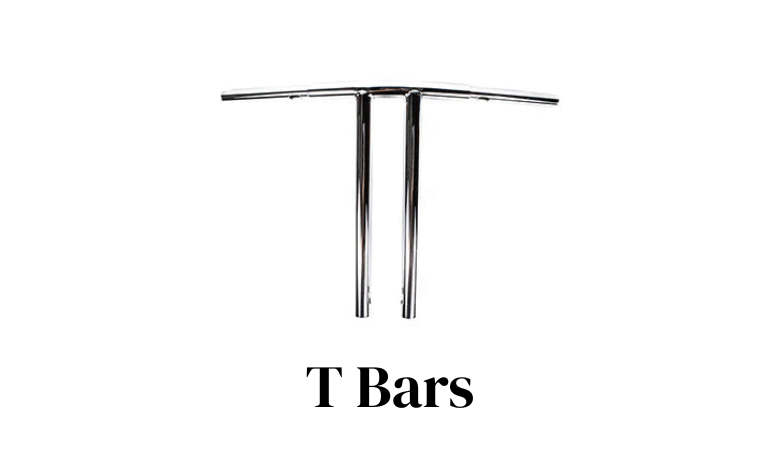Everything You Need to Know About T Bars: Meaning, Uses & Choosing the Right One

If you’ve ever looked up at the ceiling in an office, stood in line at a ski resort, or bought a pair of kids’ school shoes, chances are you’ve come across something called a T bar. The funny thing is, this simple name shows up in very different places—engineering, sports, and even fashion.
When I first heard the term, I assumed it referred to a construction material. Later, while skiing, I learned it also describes a type of ski lift. And years later, when buying shoes for my niece, the sales clerk handed me “T-bar sandals.” That’s when I realized the same name covers three completely different things—all sharing one simple shape: the letter “T.”
So let’s break down what T bars are, how they’re used, what makes them practical, and how to choose the right type for your needs. Whether you’re a builder, a skier, or a parent buying shoes, this guide will help you understand it all in plain English.
Section 1: What is a T Bar?
At its simplest, a T bar is anything shaped like the letter “T.” It usually has a long straight section (called the stem) with a shorter crosspiece at the top. The design gives it strength and stability, which is why it’s so common in engineering and construction.
In construction, a T bar (or “tee bar”) is a metal beam used to support structures. In skiing, it’s a lift that pulls skiers uphill while they stand. And in footwear, it’s a shoe strap shaped like a “T” that crosses over the foot for support.
Despite the different contexts, the idea behind each is similar—function through simplicity. That “T” shape adds strength, balance, or grip where it’s needed.
A quick visual
Imagine turning the letter “T” sideways: that’s a steel T-bar in a building. Turn it upright again: that’s the handle on a ski lift. Draw it over a shoe: that’s the T-bar strap. One simple shape, endless uses.
Read Also: Vuianime: The Next Evolution in Immersive Anime Experiences
Section 2: Types and Applications of T Bars
Let’s explore the three main worlds where T bars appear—construction, skiing, and fashion.
2.1 Construction and Structural Use
In construction, T bars (or T-sections) are made from steel, aluminum, or stainless steel. They’re common in buildings, bridges, and ceiling frameworks. The top of the “T” handles compression, while the stem resists tension, making it ideal for supporting heavy loads.
How it’s made
Most T bars are hot-rolled or extruded. Hot-rolled steel is shaped while the metal is still glowing red from heat, which makes it strong but a little rougher in texture. Extruded aluminum T bars, on the other hand, have smooth finishes and are lightweight, which makes them perfect for interior design or lightweight frames.
Where they’re used
-
Supporting roof or ceiling grids (like in offices or malls)
-
Reinforcing structural frames and columns
-
Making machine parts, frames, and support rails
-
DIY furniture or shelving
When I worked on a small home renovation, we used aluminum T bars for a suspended ceiling. They were light, easy to cut, and created a clean, professional look. It made me appreciate how simple materials can make a big difference when installed properly.
2.2 Ski Lifts – The T Bar Lift
If you’ve been skiing in Europe or North America, you’ve probably ridden a T-bar lift. It’s one of the oldest and simplest types of ski lifts, invented in the 1930s.
A T-bar lift has a long cable with T-shaped bars attached every few meters. Two skiers stand side by side and place the crossbar behind their thighs or under their seat, then the lift gently pulls them uphill.
Tips for beginners
The first time I tried a T-bar, I made the classic mistake of sitting down too much. The trick is to stand up straight and let it pull you—don’t fight it. Keep your skis parallel, relax your knees, and enjoy the slow, scenic ride uphill.
Why resorts still use it
Even though chairlifts and gondolas are more modern, T-bars remain popular for short slopes and training areas. They’re inexpensive, simple to maintain, and can operate in windy conditions where chairs would have to stop.
2.3 Footwear – The T Bar Shoe
In fashion, especially children’s and women’s shoes, a T-bar refers to a strap design that forms a “T” across the top of the foot. The vertical strap connects to a horizontal one near the ankle, helping to keep the shoe secure.
You’ve probably seen these in school uniforms or vintage styles. They offer a nice mix of comfort, support, and charm.
Why parents love them
T-bar shoes are easy for kids to wear. They don’t slip off easily, and the buckle gives an adjustable fit. When I bought a pair for my niece, she said they felt “snug but not tight.” They’re also a favorite for dance or dress shoes because they stay in place during movement.
Section 3: Technical Specifications and How to Choose
Let’s go a bit deeper into the details, especially for construction or engineering use.
Understanding the T Shape
The strength of a T-bar comes from its cross-section. The top flange resists bending, while the vertical stem (the web) handles shear and tension. This combination allows it to carry both vertical and horizontal loads efficiently.
Hot Rolled vs Cold Formed T Bars
-
Hot Rolled: Made at high temperatures. Strong, durable, ideal for heavy construction.
-
Cold Formed (or Extruded): Made at room temperature. Smoother, better surface finish, used for light or decorative work.
Material Options
-
Carbon Steel: High strength, affordable, requires anti-rust coating.
-
Stainless Steel: Corrosion-resistant, used outdoors or in humid environments.
-
Aluminum: Lightweight, easy to cut, great for interiors and lightweight structures.
If you’re unsure what to buy, always check the grade and finish. For example, stainless steel T-bars often come in grades like 304 or 316—the latter is more resistant to saltwater corrosion, making it ideal for marine projects.
T Bars vs I Beams
A lot of people confuse these. The I-beam is stronger in heavy structural work because of its double-flanged design, but T-bars are easier to weld and fit into smaller structures. Think of T-bars as the more flexible, lightweight cousin of the I-beam.
Installation Basics
Installing T-bars is straightforward but requires accuracy. Always:
-
Align carefully before welding or fastening.
-
Ensure even load distribution.
-
Use the right protective coating if exposed to moisture.
When I helped a friend build a workshop ceiling, we used powder-coated T bars to prevent rust. Five years later, they still look brand new.
Section 4: Benefits and Challenges
Benefits
-
Strength and Stability: The “T” shape provides excellent load-bearing support.
-
Versatility: Works in ceilings, supports, frameworks, and decorative structures.
-
Ease of Installation: Light materials like aluminum are easy to handle.
-
Cost-Effective: Cheaper than heavier beams for small projects.
-
Customizable: Available in various materials and finishes.
In skiing, T-bars are low-maintenance, and in footwear, they add comfort and style. In every field, their design focuses on balance and reliability.
Challenges
-
Corrosion: Steel T-bars need protection from moisture.
-
Alignment Issues: Poor installation can cause bending or gaps.
-
User Error (Skiing): Many beginners fall off T-bar lifts at first.
-
Style Limitation (Shoes): Some find T-bar shoes too traditional for modern outfits.
None of these are dealbreakers—they just highlight why it’s worth knowing your material, your environment, and your goal before choosing.
Section 5: Practical Tips and Buying Guide
For Construction Projects
-
Measure precisely: Always calculate load requirements before purchase.
-
Ask for certificates: Good suppliers provide mill test reports and grade specifications.
-
Compare finishes: Polished, brushed, or powder-coated surfaces have different properties.
-
Buy from trusted suppliers: Hardware stores, metal service centers, or specialized online shops often list material data sheets.
For Skiing
If you’re heading to the slopes, here’s how to master the T-bar:
-
Stand tall and centered.
-
Hold the bar behind your thighs, not under you.
-
Don’t sit down or lean back.
-
If you fall, move quickly to the side and let the next bar pass.
After a few tries, it becomes second nature. The T-bar’s simplicity is part of what makes skiing so enjoyable.
For Footwear
When buying T-bar shoes:
-
Check that the vertical strap aligns with the center of the foot.
-
Look for soft leather or breathable fabric.
-
The buckle should close snugly without pinching.
-
For kids, leave a thumb’s width between the toe and the shoe front.
These small details make a big difference in comfort and durability.
Section 6: Real-World Examples and Experience
A few years ago, I helped a friend build a small pergola in his backyard. Instead of traditional wood supports, we used stainless steel T-bars. They gave the structure a clean, industrial look, and we didn’t have to worry about termites or warping. It’s still standing strong today.
Another example comes from skiing in Banff, Canada. The T-bar lift there was a bit intimidating at first, but after getting the hang of it, I found it much faster than waiting for a chairlift. The best part? You stay connected to the snow, not hanging above it.
And finally, my niece still wears her red T-bar shoes every other day. She says they make her feel like “a princess who can run.” There’s something nice about seeing how one simple idea works across completely different worlds.
Conclusion
The T-bar might seem like an ordinary object, but it’s one of those quiet inventions that keeps the world running smoothly. From supporting buildings and pulling skiers uphill to keeping shoes in place, it’s a great example of functional design.
If you’re working on a building project, pick the right material and size. If you’re skiing, stand tall and enjoy the ride. And if you’re shopping for shoes, trust the humble T-strap for comfort and charm.
Simple ideas last—and the T-bar proves it.
FAQ
Q1. What is the difference between a T-bar and an I-beam?
An I-beam has two flanges (top and bottom), making it stronger for heavy loads. A T-bar has one flange and is lighter, easier to cut, and better for smaller projects.
Q2. Are all T-bars made of steel?
No. They can be made from aluminum, stainless steel, or brass depending on the purpose.
Q3. Is a T-bar lift hard to use?
Not really. Once you learn to balance and stand tall, it’s one of the easiest and most reliable ski lifts.
Q4. Can I use T-bars for DIY projects?
Absolutely. They’re great for frames, supports, and decorative structures. Just make sure you pick the right size and thickness.
Q5. How do I prevent rust on T-bars?
Use galvanized or stainless steel, or apply a powder coating or primer before installation.



